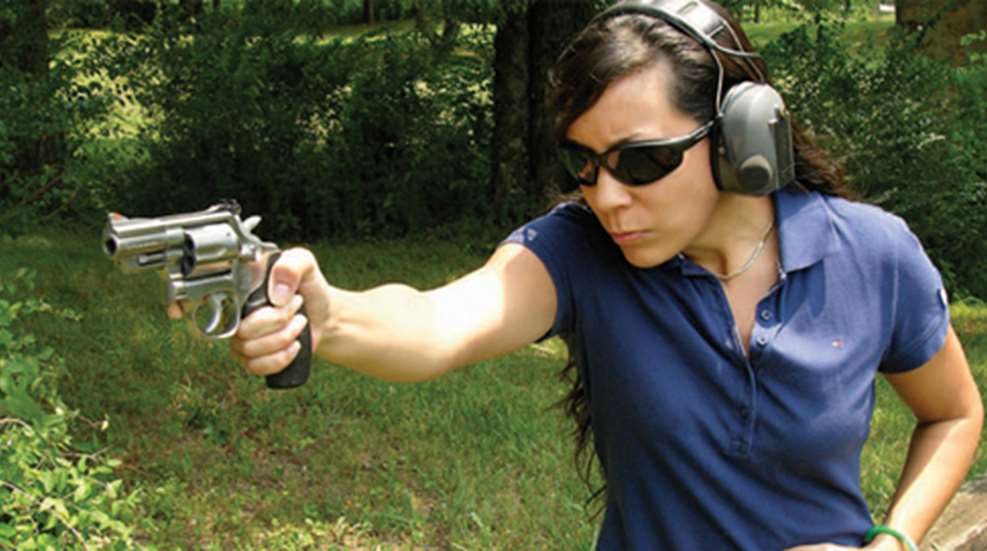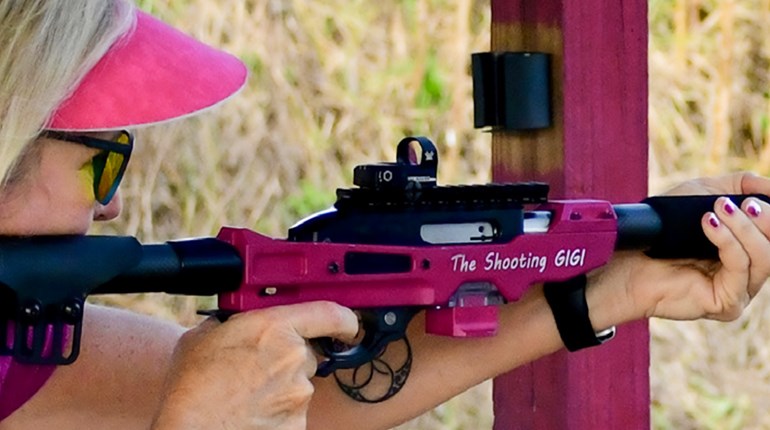
"We call conventional wisdom just that because it bears merit. For example, in modern pistolcraft, the handgun is fired from a two-hand-hold that creates a significantly more stable platform than one-handed shooting."
This is gospel.
We train two handed, we dry-fire two-handed, we teach two-handed and if that day comes, we will fight two-handed. We only shoot one-handed during those obligatory weak-hand drills that show up around the last 15 rounds from a box.
This is what is taught in the best of the best shooting schools in both the private and public sectors. But, there is one flaw to this method.
Other people.
We, in the self-defense community, see things as such. The good guy (us) must contend with the B-i-Q (bad-guy in question) or maybe multiple bad guys. Sure, we run the courses with shoot- and no-shoot-targets—those silhouetted hands versus the silhouetted gun. What most of shooters (and many instructors) who have never been in an armed confrontation seemingly forget about are the people with us. The wife, the child, the friends...
I understand. You are Delta Five top tier one operator. Your 11-year-old daughter, however, is not. People in bad situations do strange things and, one can find out quickly, people live in their minds, not yours. When the flight receptors kick in, there is no telling what can happen—like running in front of muzzles or freezing all together. In case no one ever told you, when people panic in hard fashion, they go deaf.
So that weak hand about to join your dominant hand already on the gun to create that über-stable platform for shooting just got a new job: Leadership.
The truth is you do not "need" two hands on the pistol. You do not. Does it help? Absolutely. But, what you "need" more than anything else is to control the entire situation, and when there are folks with you this means you have to gain control of both them and the bad guy.
I see the consternation on your face.
Two hands. Always two hands.
Unless of course you get wounded, then, just as you do in those weak-hand drills, you curl that dominant arm up like a busted bird wing close to your body and shoot with your far-less-experienced hand. For the record, if you get shot in that dominant arm, you won't have it all curled up, it's going to go limp, dead and hang grotesquely at your side—while bleeding profusely. If you have the expectation that the less-experienced "weak hand" can shoot you through a bad circumstance accurately enough, then why can you not expect the same of your more well-adjusted and muscle-memory-trained dominant hand?
In most self-defense shooting scenarios, the distance will fall between 7 and 25 yards. These are not long shots, and "minute of center mass" is all the accuracy you require. Lest your consternation be in full force, no one ever said that once you have your people under control, you have to keep shooting one-handed. As a matter of fact, you might start off shooting two-handed and be forced to switch to one hand in order to keep a panicked loved one in place, then go back to two when it is safe.
In executive protection, I've had to contend with a number of confrontations, and the predominate lesson is to never make assumptions about people in bad situations. Everyone acts differently when things escalate. Some principals (my clients) freeze, some grab your arm and some (knowing you are armed) become brave by default and "help" escalate the confrontation with aggressive behavior or language. One principal, during a bad circumstance, refused to lift her chin off her neck and kept looking down the entire time. If she didn't see it, it wasn't happening, much akin to a child protecting themselves from monsters under the bed sheet. On another occasion, a principal became combative and tried to back me up.
Every confrontation I've been involved in where the potential for lethal use of force existed at any moment while protecting someone else, my left hand was utilized to move the principal behind me or at least touch them in some capacity in order to say three things to three different people.
To my client it said "you need to be behind me. Now."
To the B-i-Q it said "focus on me, because you are contending with me now."
It also told me, by touch, where the client was without taking my eye off the prize, so to speak.
In every single instance where I have had to maneuver someone through a bad occurrence my hand will go to the belt line. This allows me to move them where I want without disturbing their center of balance, and if it does I can correct it before they fall. The hand has been raised: What if there is no belt and they are wearing a dress? You grab a handful of dress right at the waist line or you wrap your arm around the waist. Above all else you move them. You should be communicating as much as you can with them, but in moments of high stress, words often fail when you ARE practiced at it.
A mother of two in a parking lot facing an armed confrontation should push and shove her children behind a wheel well or engine block (or both) and be far less concerned about finding the "right words" and emotional balance to encourage them to do so. If the situation deteriorated to the point where her handgun has been drawn, whether pointed at a bad man or at the ground, her "weak" hand has to move the children.
One should not overlook walking the family dog. On the surface, faced with a threat on the street to the point of lethal force use, rational thinking would be to drop the leash and draw the handgun—drop, draw, aim, shoot. The problem here is two-fold. In most cases the familial canine is not gun-broke nor confrontation-trained, and much can go bad by dropping that leash to shoot. In some cases, the result can be instantaneous and can have a lasting impact. In the rush of it all, after dropping the leash in, your will pup run serpentine, in and out of your legs, trying to stay close to you in its panic. Without control of the leash, you are now fighting everything and everyone just to stay on your feet, not to mention shooting to save your life.
The secondary, also long-lasting potential effect of dropping that leash in a lethal force encounter would be if you were forced to shoot your attacker. Your dog, assuming the role of protector and now being free to do so, attacks the man you just shot who is now on the ground. It only takes one witness to say "he shot that guy and turned his dog loose on him," or for one coroner to question why there are dog bites on the attacker to change the course of your life and self-defense claim. Think of it like those old time cavalry soldiers: reins in one hand, pistol in the other, and control over both.
From a mechanical aspect, you are not doing anything you would not already do in regards to aiming and firing, you are just leaving one hand off the gun as the situation dictates. I've worked with enough clients and instructed enough people to know people like definitives. They want absolutes about what will happen—what a fight will look like, how many rounds will be fired, how long the distances are going to be, etc. The fight is going to be what it is, not what you want it to be. It is far easier to train for the mechanics of lethal use of force, like drawing and shooting, because these are inherent to the goal of self-preservation.
If you read between the lines you should ultimately conclude training with one hand is far more about controlling the situation all around and less about one hand on the pistol.




































